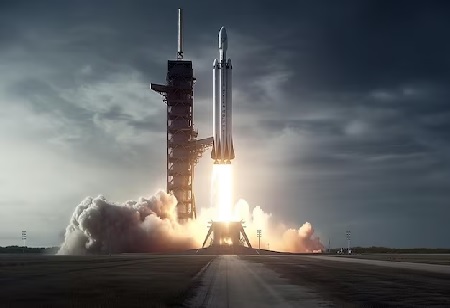
First U.S. Private Spacecraft Embarks on Journey to the Moon

 Astrobotic Technology's Peregrine lunar lander initiated its historic mission to the Moon, marking a significant step toward returning America to lunar exploration after approximately 50 years. The US hasn't pursued a moon landing since Apollo 17 in December 1972. Launched via United Launch Alliance's new Vulcan Centaur rocket at 2:18 a.m. EST (7:18 GMT) from Cape Canaveral Space Force Station in Florida, the lander will conduct system checks in a stable orbit before endeavoring the historic lunar landing on February 23.
Astrobotic Technology's Peregrine lunar lander initiated its historic mission to the Moon, marking a significant step toward returning America to lunar exploration after approximately 50 years. The US hasn't pursued a moon landing since Apollo 17 in December 1972. Launched via United Launch Alliance's new Vulcan Centaur rocket at 2:18 a.m. EST (7:18 GMT) from Cape Canaveral Space Force Station in Florida, the lander will conduct system checks in a stable orbit before endeavoring the historic lunar landing on February 23.
Astrobotic's Peregrine lunar lander has initiated ground communications from its DHL Mission Control Center following a successful launch, marking the first US commercial robotic mission to the Moon, propelled by ULALaunch’s VulcanRocket on January 8. Scheduled to touch the lunar surface in February, the Peregrine Mission 1 by Astrobotic aims to achieve the maiden commercial spacecraft landing on the Moon. This marks Astrobotic’s inaugural lander mission, aspiring to make history with the first successful private spacecraft landing on the lunar surface.
The lander is equipped with 20 payloads, including 5 from NASA's Commercial Lunar Payload Services (CLPS) initiative. These payloads encompass a range of missions, from detecting potential water ice near the lunar surface to showcasing rover swarm technology. Additionally, the lander carries various payloads featuring human representation through artwork and historical artifacts. According to NASA Administrator Bill Nelson, this CLPS launch signifies a significant milestone for humanity as preparations are made to return to the lunar surface for the first time in more than 50 years.
"These challenging missions will not only conduct innovative scientific research on the Moon but also bolster the expanding commercial space sector, showcasing American technological prowess and inventive capabilities. The CLPS missions present extensive opportunities for scientific exploration, offering insights into our solar system's development and influencing the future of human space exploration for the Artemis Generation", he further stated.
Following its landing on the Moon in February, Peregrine is set to spend around ten days collecting vital scientific data, conducting extensive studies on Earth's closest celestial body. This mission will contribute to preparing the first woman and person of color to explore the Moon as part of the Artemis program. NASA's instruments aboard the lander will focus on analyzing the lunar exosphere, investigating the thermal properties of the lunar regolith, determining hydrogen levels in the soil at the landing site, and monitoring the radiation environment. The five NASA payloads involved in scientific research on the lander will aid the agency in gaining a deeper understanding of planetary processes and evolution, searching for evidence of water and other resources, and supporting sustained human exploration in the long term.

